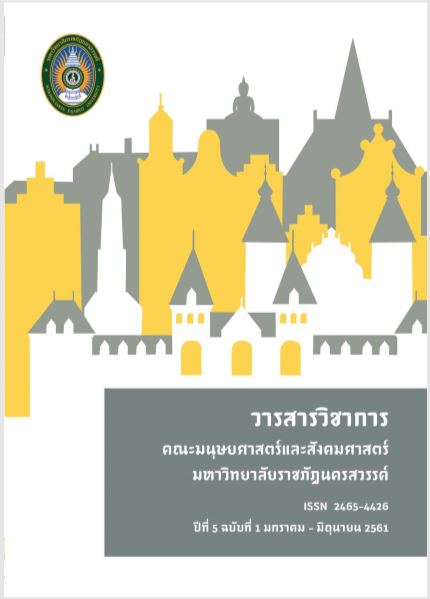The Investigation of Identities and Shared Identities of the Neighboring Countries : A Case Study of Laos, Myanmar, and China
Main Article Content
Abstract
This Qualitative Researchaims to investigate the identities
of neighboring countries (Laos, Myanmar, China); and to analyze
the shared identities of neighboring countries (Laos, Myanmar,
China) and Thailand. The research instrument wasstructured
interview.The results revealed that the 4 neighboring countries
illustrated the shared identities within 2 aspects. That is,
Personal Identity comprised thought and mind, personality,
characteristics, behavior. And, their shared values were
gratefulness to ancestors and parents, paying respects to seniors,
pride of their nations. The Social Identity included nationality,
diverse ethnic groups, migration of ethnic groups, and cross-ethnic
marriage. The language aspect used English for communication
among neighboring countries. The religion, belief and ritual shared
similarities in Buddhism belief, belief about mysterious and
supernatural phenomena, fortunetelling, belief about karma
consequences, and belief about life after death and reincarnation.
The cultural aspect shared Songkran Festival and Loykrathong
Festival. The way of life aspect shared costume and food lifestyle
in using silk and cotton for making dress and using jewelry to
indicate social class as well as consuming rice as main dish. The
arts and performance aspects shared presentation of joy and
fun. The economic, social, and politics aspects relied on free
trade. The education aspect focused on compulsory education.
These identities and shared identities meant the beauty of
diversity. So, knowledge, understanding, and attitude towards
the identities of the neighboring countries were an effort of
people who preferred co-existence and interdependence in many
aspects from household consumption, trading, and cultural
diffusion. This excellent relationship among the neighboring
countries is aimed for developing the society for the better
livelihood of the people and alleviating problems caused by
misunderstanding.


